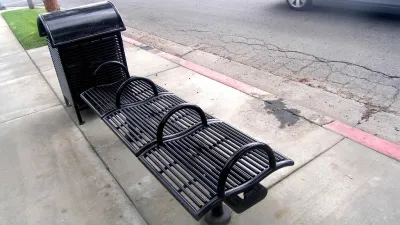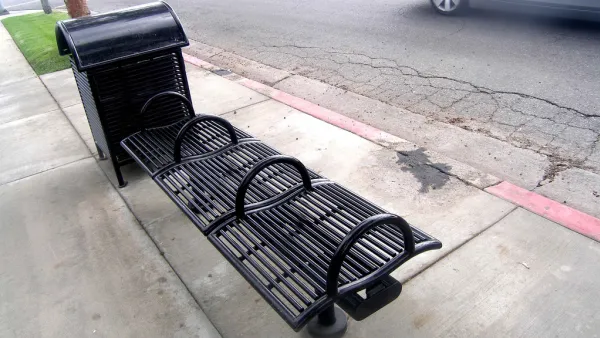In an effort to make public spaces more inclusive, a new pocket park in the Callowhill neighborhood will seek input from people experiencing homelessness on how to make the space more welcoming and functional.

Unlike most public parks, which actively discourage people experiencing homelessness from using their facilities, a new Philadelphia pocket park will be designed, in part, by and for people experiencing homelessness. Alfred Lubrano reports on the project, funded through a $82,500 grant from the William Penn Foundation and managed by the Sunday Breakfast Rescue Mission, the city's oldest and largest homeless shelter.
According to the National Recreation and Park Association, "nearly half of urban park and recreation agency directors in the United States view the homeless population as a 'nuisance that impedes other people’s enjoyment of park resources.'" In many cases, park authorities use "spikes, bumps, uncomfortably designed benches, and other pieces of so-called hostile architecture" to discourage long-term and overnight use. By contrast, the Philadelphia pocket park, located on a small stretch of North Pearl Street adjacent to Sunday Breakfast, seeks to provide a welcoming space for all community members. "The ideas for what the park will look like will come out of what residents and community members are interested in seeing," said Heidi Segall Levy, director of design services for the project. As of now, there is no plan for public bathrooms, "which foster safety concerns," but park plans call for hand-washing stations, storage space, and comfortable seating.
"We believe a successful public park is one that doesn’t exclude by design or stewardship anybody by race, ethnicity, housing status, or socioeconomic status,” said Judilee Reed, the William Penn Foundation’s program director of creative communities. Construction on the park is scheduled to start in 2022.
FULL STORY: A park that welcomes homeless people, partially designed by homeless people, will be a Philly first

National Parks Layoffs Will Cause Communities to Lose Billions
Thousands of essential park workers were laid off this week, just before the busy spring break season.

Retro-silient?: America’s First “Eco-burb,” The Woodlands Turns 50
A master-planned community north of Houston offers lessons on green infrastructure and resilient design, but falls short of its founder’s lofty affordability and walkability goals.

Delivering for America Plan Will Downgrade Mail Service in at Least 49.5 Percent of Zip Codes
Republican and Democrat lawmakers criticize the plan for its disproportionate negative impact on rural communities.

Test News Post 1
This is a summary

Test News Headline 46
Test for the image on the front page.

Balancing Bombs and Butterflies: How the National Guard Protects a Rare Species
The National Guard at Fort Indiantown Gap uses GIS technology and land management strategies to balance military training with conservation efforts, ensuring the survival of the rare eastern regal fritillary butterfly.
Urban Design for Planners 1: Software Tools
This six-course series explores essential urban design concepts using open source software and equips planners with the tools they need to participate fully in the urban design process.
Planning for Universal Design
Learn the tools for implementing Universal Design in planning regulations.
EMC Planning Group, Inc.
Planetizen
Planetizen
Mpact (formerly Rail~Volution)
Great Falls Development Authority, Inc.
HUDs Office of Policy Development and Research
NYU Wagner Graduate School of Public Service





























